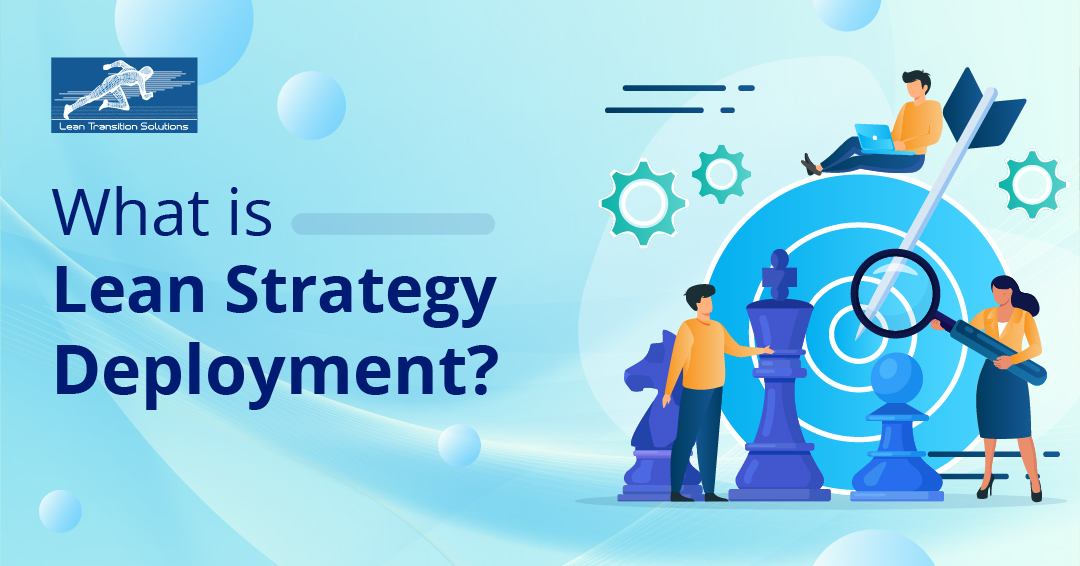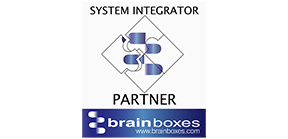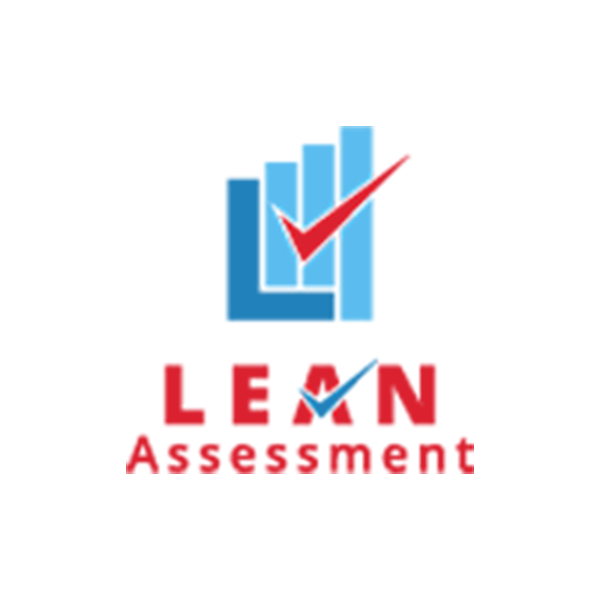What is Lean Strategy Deployment?
- By Brett Griffiths
- Lean Technology
- September 19 , 2023
- Share

Lean thinking is an innovative approach that reduces waste and increases value to achieve operational excellence and, ultimately, result in organisational success. Lean strategy deployment lies at the heart of this concept, designed to seamlessly align organisational goals, engage cross-functional teams, and drive continuous improvement. This blog post will explore how lean strategic deployment is a relevant and transformative concept within the lean strategy framework.
What is a Lean Strategy?
Lean strategy, often called lean thinking or management, is a business approach and philosophy aiming to maximise customer value while minimising organisational waste and inefficiency. It draws its roots from the principles initially developed in lean manufacturing, notably popularised by Toyota in the mid-20th century. Lean strategy extends these principles beyond the manufacturing sectors to various other industries and processes.
Key Components and Principles of Lean Strategy
- Customer Value: The primary focus of the lean strategy is to understand and deliver what customers really value. This entails identifying customer needs and preferences and tailoring products or services to meet those needs efficiently.
- Waste Reduction: Lean strategy emphasises identifying and eliminating waste in all forms. These wastes, often called "Muda," include overproduction, excess inventory, defects, waiting times, unnecessary transportation, and underutilised employee skills.
- Continuous Improvement: Central to lean thinking is the commitment to continuous improvement. Organisations regularly seek ways to make incremental enhancements in processes, products, and services. The PDCA (Plan-Do-Check-Act) cycle is commonly used for this purpose.
- Pull System: In lean management, production is pulled by customer demand instead of being pushed based on forecasts. This helps in reducing overproduction and excess inventory.
- Just-In-Time (JIT) Production: JIT is a key element of lean strategy where materials and components are ordered and produced when needed, reducing inventory costs and waste.
- Standardised Work: Lean promotes establishing standardised work processes to ensure consistency, quality, and efficiency.
What is Lean Strategy Deployment?
Lean strategy deployment, also known as Hoshin Kanri or Policy deployment, is a systematic and structured approach organisations use to effectively implement their lean strategy and ensure that it resonates at every level of the organisation. This process aligns an organisation's strategic goals with its daily operations, ensuring that everyone, from top management to front-line employees, works together to achieve common objectives. Here's a breakdown of what lean strategy deployment includes:
- Alignment of Goals: Lean strategy deployment begins with aligning the organisation's top-level strategic goals and objectives. These goals should be clearly defined, specific, and linked to the organisation's vision and mission.
- Hoshin Kanri Planning: Hoshin Kanri is a Japanese term which translates to "compass for policy" or "directional management." During the Hoshin Kanri planning process, top management identifies the key objectives that are (usually 3-5) vital to the organisation's success. These objectives become the focus of the deployment process.
- Cascading Objectives: Once the critical objectives are defined, they are cascaded down through the organisation's hierarchy. Each management level sets its objectives and key initiatives directly contributing to achieving the higher-level objectives. This cascading process continues until it reaches the front-line employees.
- Cross-Functional Teams: Lean strategy deployment emphasises cross-functional collaboration. Teams are often formed to address specific objectives or projects. These teams include members from various departments and levels within the organisation.
Hoshin Kanri: The North Star of Lean Strategy Deployment
In the realm of Lean Strategy Deployment, Hoshin Kanri emerges as the unwavering North Star, guiding organisations toward their strategic objectives. Like a celestial compass, Hoshin Kanri illuminates the path of aligning top-level strategic goals with everyday operations, ensuring that every action and initiative is directed toward a common purpose. It leads the cascade of objectives throughout the organisation, from leadership down to front-line teams, creating a seamless alignment that resembles constellations. Much like celestial navigation, Hoshin Kanri involves regular course correction and adjustment, as it empowers teams to navigate throughout the process and overcome obstacles on the journey toward strategic success. It is a clear guiding light for the organisation, fostering collaboration and continuous improvement to stay on track with its strategy.
Policy Deployment v/s Strategy Deployment: What's the difference?
Policy deployment and strategy deployment are terms often used interchangeably, but they have subtle differences. Policy deployment primarily focuses on aligning an organisation's policies and processes with its strategic goals. It emphasises ensuring that policies and procedures at all levels of the organisation support the overarching strategy. Strategy deployment, on the other hand, encompasses a broader approach. It not only aligns policies and processes but also involves setting and cascading strategic objectives, engaging cross-functional teams, and emphasising continuous improvement and employee involvement to achieve those objectives.
Lean Strategy Deployment Frameworks
- Lean Portfolio Management (LPM): LPM is a framework used to align an organisation's portfolio of projects and initiatives with its strategic objectives. It involves selecting, prioritising, and managing projects based on their strategic significance and impact.
- Agile Strategy Management: Agile frameworks like Scrum and Kanban can be adapted for Lean strategy deployment, especially in organisations prioritising adaptability and responsiveness. These frameworks promote iterative planning, execution, and continuous improvement, which align well with lean principles.
- Toyota Production System (TPS): While not exclusively a Lean strategy deployment framework, TPS is fundamental to lean thinking. It involves principles like Just-In-Time production, continuous improvement, and respect for people, all of which can be integrated into strategy deployment.
How to Implement Lean Strategy Deployment in your organisation?
Deploying the lean strategies (Hoshin Kanri or Policy Deployment) in your organisation involves a systematic approach to aligning your strategic goals with day-to-day activities and fostering a culture of continuous improvement. So, let’s understand the steps to implement lean strategy deployment in your organisation.
Step 1: Strategy Formulation
- Begin by defining your organisation's long-term vision, mission, and values.
- Identify key strategic goals and challenges that need to be addressed.
- Formulate a high-level strategy outlining how to achieve your vision.
- Ensure that this strategy is communicated clearly to all relevant stakeholders.
Step 2: Setting the Strategic Objectives
- Break down the high-level strategy into Specific, Measurable, Achievable, Relevant, and Time-bound (SMART) objectives.
- Define Key Performance Indicators (KPIs) to measure progress toward these objectives.
- Establish targets or benchmarks for each KPI.
Step 3: Cascading the Strategy
- Communicate the strategic objectives and KPIs throughout the organisation.
- Engage employees at all levels by involving them in discussions and seeking their input.
- Cascade the objectives throughout the organisation so that each department and team aligns towards achieving a common goal.
- Ensure that each level of the organisation understands how their work contributes to achieving specific strategic objectives.
Step 4: Strategic Execution and Monitoring
- Develop action plans for each strategic objective, outlining the specific tasks and initiatives required to achieve them.
- Implement these action plans and ensure they align with the overall strategy.
- Continuously monitor progress toward strategic objectives and KPIs.
- Use tools like Balanced Scorecard (BSC) to make regular reports by KPI visualisation and track performance constantly to identify deviations.
Step 5: Reviewing the Strategy
- Conduct regular review meetings to assess the progress of each strategic objective and action plan.
- Use these meetings to identify any issues or roadblocks and take corrective actions as necessary.
- Ensure that the strategic objectives remain relevant in the changing circumstances or market conditions.
- Consider feedback from employees and other stakeholders to make adjustments as needed.
Step 6: Continuous Improvement and Adaptation
- Foster a culture of continuous improvement by encouraging employees to suggest and implement changes that can enhance performance and contribute to strategic goals.
- Use Lean principles, such as Kaizen (continuous improvement), to drive incremental improvements in processes and operations.
- Be open to adapting the strategy based on the insights and feedback gathered during the monitoring and review process.
- Repeat the cycle by revisiting and refining the strategy periodically to ensure that it remains aligned with the organisation's goals and the evolving business environment.
What are the Benefits of Lean Strategy Deployment in your organisation?
- Improved operational efficiency
- Enhanced customer satisfaction
- Employee engagement and empowerment
- Sustainable growth and adaptability to market changes
Lean Strategy Deployment Techniques
Lean strategy deployment tools and techniques are integral to the Lean philosophy, which aims to eliminate waste, improve efficiency, enhance quality, and align the organisation's efforts with its strategic goals. They provide structured approaches for problem-solving, process improvement, and strategic alignment.
1.Value Stream Mapping
Value Stream Mapping (VSM) is a visual tool used to analyse, document, and improve the flow of materials and information required to bring a product or service to a customer. VSM typically includes mapping the current state of a process (how it currently operates), identifying value-added and non-value-added activities, and then designing a future state that eliminates waste and improves efficiency.
2.A3 Problem Solving
A3 Problem Solving is a structured and systematic approach to identifying, analysing, and solving problems within an organisation. It involves using an A3-sized sheet of paper to capture information about the problem, including the current state, root cause, proposed countermeasures, and an action plan for implementation. A3 thinking encourages collaborative problem-solving and concise documentation.
3.Gemba Walks
Gemba Walks involve going to the actual workplace or "Gemba" to observe processes, gather information, and engage with employees to understand their work and identify improvement opportunities. Gemba walks focus on observation, asking open-ended questions, and fostering a culture of continuous improvement by involving all employees in problem-solving and process improvement.
4.Kaizen Events
Kaizen Events are short-term, focused improvement activities aimed at making rapid, incremental changes to a specific process or area. These events typically follow a structured agenda and involve cross-functional teams working intensively for a few days to identify and implement improvements. The goal is to achieve immediate results and sustain continuous improvement over time.
5.Hoshin Kanri X Matrix
The Hoshin Kanri X Matrix is a tool used in strategic planning to align organisational goals and objectives with specific action plans and Key Performance Indicators (KPIs). The X Matrix visually represents the linkage between long-term strategic objectives (top row), strategic initiatives (left column), responsible parties, and KPIs. It ensures that activities at all levels of the organisation support the overarching strategy.
6.PDCA Cycle (Plan-Do-Check-Act)
The PDCA Cycle is also known as the Deming Cycle or Shewhart Cycle. In lean strategy deployment, the PDCA cycle is used iteratively to drive continuous improvement and to ensure that activities and processes are aligned with the organisation's strategic goals. It provides a structured approach for problem-solving, learning, and adapting to changes in the business environment, ultimately helping organisations achieve their objectives more effectively and efficiently. Each stage of the PDCA cycle plays a crucial role in effectively improving the strategy deployment process.
- Plan: Identify a problem or opportunity, set objectives, and plan for improvement.
- Do: Implement the plan on a small scale to test its effectiveness.
- Check: Measure and evaluate the results against objectives and expectations.
- Act: Based on the evaluation, make necessary adjustments and standardise the improved process.
Best Practices to Overcome Lean Strategy Deployment Challenges
- Lack of Leadership Commitment: Leadership involvement and commitment are critical for successful lean strategy deployment. It means that top leadership, including executives and managers, actively participate in and support the deployment of lean strategies.
- Inadequate Training and Resources: Involving and training the employees are essential for ensuring that lean strategies are effectively executed throughout the organisation.
- Poor Communication: Effective communication and feedback mechanisms are crucial for keeping everyone informed and engaged in lean strategy deployment.
- Resistance to Change: Lean strategy deployment should be flexible and adaptable to respond to changing conditions and evolving organisational needs.
Lean Strategy Deployment Example in a Manufacturing Industry
An automotive manufacturing company has set a strategic objective to reduce their production lead times by 20% and improve their on-time delivery performance to 95%. This strategic objective aligns with their ultimate goal of increasing customer satisfaction and expanding their client base. To achieve this, the company has decided to break down the objectives into different departments within the organisation. The main focus is to refine processes, such as production line enhancements. This action plan was developed through consecutive discussions. Using lean strategy deployment principles and tools like the Hoshin Kanri X matrix helps to visualise Key Performance Indicators against each process, whereby the automotive manufacturing organisation can reduce lead times and improve on-time delivery, thus delivering greater value to their customers and giving the company a competitive edge in the market.
Lean strategy deployment serves as a powerful framework for ensuring that an organisation's strategic objectives are translated into actionable plans and that everyone within the organisation is aligned and engaged in working towards those objectives. It helps organisations remain agile, adapt to changing circumstances, and continuously improve their processes and performance. Remember that lean strategy deployment is an ongoing process that requires commitment, communication, and a willingness to adapt. It's not a one-time event but a dynamic approach to achieving and sustaining organisational success.
Start Free Trial
LEAN TRANSITION SOLUTIONS
The Old Vicarage, Pershore Road, Upton Snodsbury, Worcester, Worcestershire, WR7 4NR, United Kingdom.
BLOG
Lean Transition Solution
-
Lean Industry 4.0 Solutions
- TITAN:Computerised Maintenance Management System
- Data Point:Computerised Balanced Scorecard
- Janus: Automated Shop-floor Data Capture System
- T-Card: Integrated Production Planning and Plant Level Execution System
- JDI: Maintenance Automation App
- Maximus: Integrated ERP System
- e-Contractor: Integrated In-house Contractor Management System
- Q-Point: Integrated Quality Management System
- Safety-Point: Integrated Health and Safety Management System
- Lean Assessment: Lean Audit and Assessment System
- Saisho: Lean 5S Audit and Assessment App
- Emergency Response App: To Manage Emergency Situations
-
Leadership 4.0 Solutions
- Your Career Academy(YCA): Learning and Development System
- YCA e-Learning : Management System
- MentorYou(MU): Mentoring App
- Leadership 4.0 : Leadership Transformation Program
- Lean Manufacturing Workshop
- Lean Manufacturing Consulting
- ILM Accredited Green Belt Training and Certification Program
- ILM Accredited Black Belt Training and Certification Program
- Software Development Service
- Resources
- Company
- Contact











